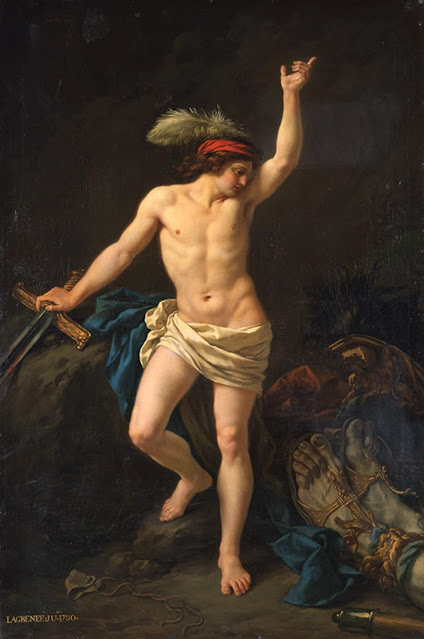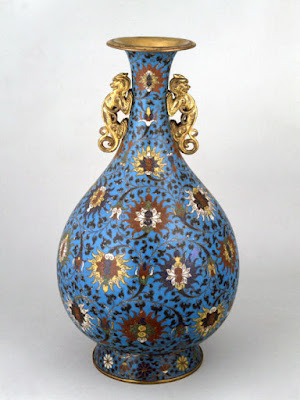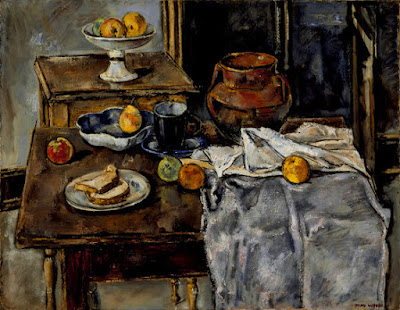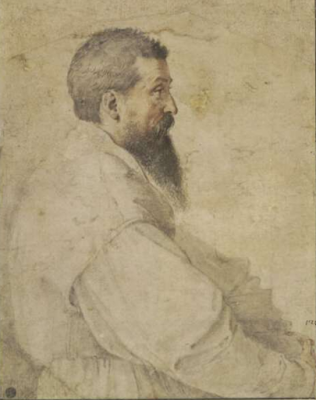 |
| Bernardo Bellotto Equestrian Portrait of Hussar Officer 1773 oil on canvas Kunsthistorisches Museum, Vienna |
-Morgan-Library-New-York.jpg) |
| Taddeo Zuccaro Group of Soldiers ca. 1563-65 drawing (study for fresco) Morgan Library, New York |
 |
| Jean-Jacques Lagrenée David triumphing over Goliath 1780 oil on canvas Musée des Beaux-Arts de Caen |
-John-and-Mable-Ringling-Museum-of-Art-Sarasota.jpg) |
| Anonymous Florentine Artist Battle between Romans and Gauls ca. 1470-80 oil and tempera on panel (originally part of a cassone) John and Mable Ringling Museum of Art, Sarasota |
 |
| Raphael Study for Figure of Fallen Soldier ca. 1511-14 drawing Ashmolean Museum, Oxford |
 |
| Jean-Simon Berthélemy Death of a Gladiator 1773 oil on canvas Los Angeles County Museum of Art |
 |
| Hans Thoma War 1907 oil on canvas Städel Museum, Frankfurt |
 |
| Franz Anton Maulbertsch Coriolanus outside the Walls of Rome ca. 1794-95 oil on panel Staatsgalerie, Stuttgart |
 |
| Donato Creti Study for a Figure of Alexander the Great ca. 1700 drawing Clark Art Institute, Williamstown, Massachusetts |
 |
| Thomas Sully Portrait of Jean Terford David 1813 oil on canvas Cleveland Museum of Art, Ohio |
-Pallas-Athena-c1560-drawing-Graphische-Sammlung-Albertina-Vienna.jpg) |
| Giuseppe Porta (Giuseppe Salviati) Pallas Athena ca. 1560 drawing Graphische Sammlung Albertina, Vienna |
 |
| Giovanni Battista Benaschi Figure wielding Sword ca. 1678 drawing Staatsgalerie, Stuttgart |
 |
| Giovanni Battista Piazzetta Head of a Young Soldier ca. 1740 drawing Städel Museum, Frankfurt |
-Art-Institute-of-Chicago.jpg) |
| Hamo Thornycroft Teucer, brother of Ajax 1882 bronze (made in Rome) Art Institute of Chicago |
 |
| Anonymous Netherlandish Artist Head of Warrior with Helmet ca. 1530-40 drawing Rijksmuseum, Amsterdam |
 |
| Roman Empire Helmet AD 50 bronze and iron Musée d'Art Classique de Mougins |
from Baile and Aillinn
Before my thoughts begin to run
On the heir of Ulad, Buan's son,
Baile, who had the honey mouth;
Their love was never drowned in care
Of this or that thing, nor grew cold
Because their bodies had grown old.
– W.B. Yeats (1903)





-550-BC-bronze-Asian-Art-Museum-San-Francisco.jpeg)
-300-220-BC-bronze-inlaid-with-gold-and-silver-Asian-Art-Museum-San-Francisco.jpeg)










-c1620-30-oil-on-canvas-Joslyn-Art-Museum-Omaha.jpg)
-Galleria-Nazionale-di-Parma.jpg)


-Goffredo-at-the-Tomb-of-Dudone-(Tasso's-Gerusalemme-Liberata)-c1745-50-porcelain-National-Gallery-of-Victoria-Melbourne.jpg)




-Classical-Warrior-c1540-50-drawing-Graphische-Sammlung-Albertina-Vienna.jpg)






-c1895-drawing-Museum-of-Fine-Arts-Boston.jpg)
-c1875-drawing-Delaware-Art-Museum-Wilmington.jpeg)


-British-Musuem.png)




-19th-century-gold-Asian-Art-Museum-San-Francisco.jpeg)

-British-Museum.png)


